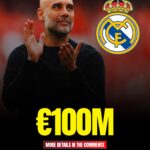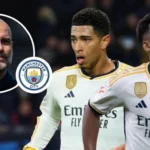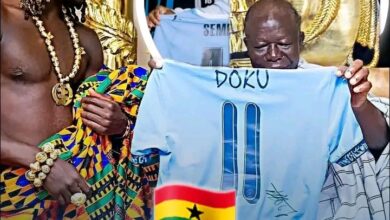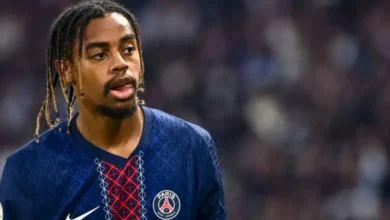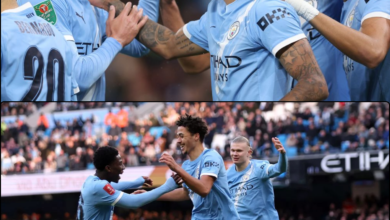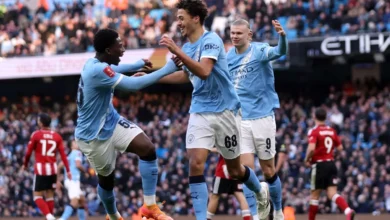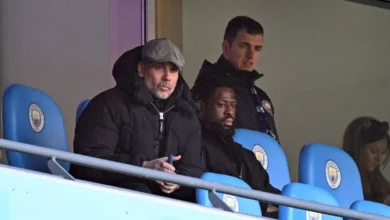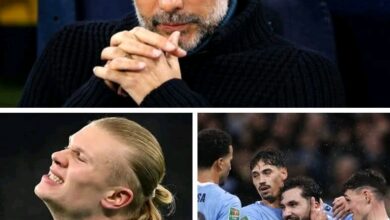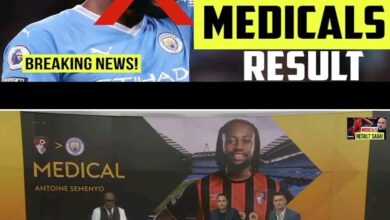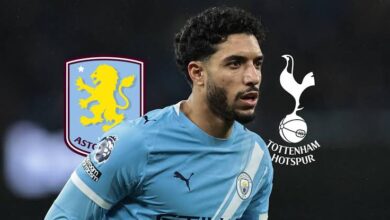Rodrygo’s agents have contacted Manchester City, igniting transfer shockwaves ahead of a potentially explosive summer move
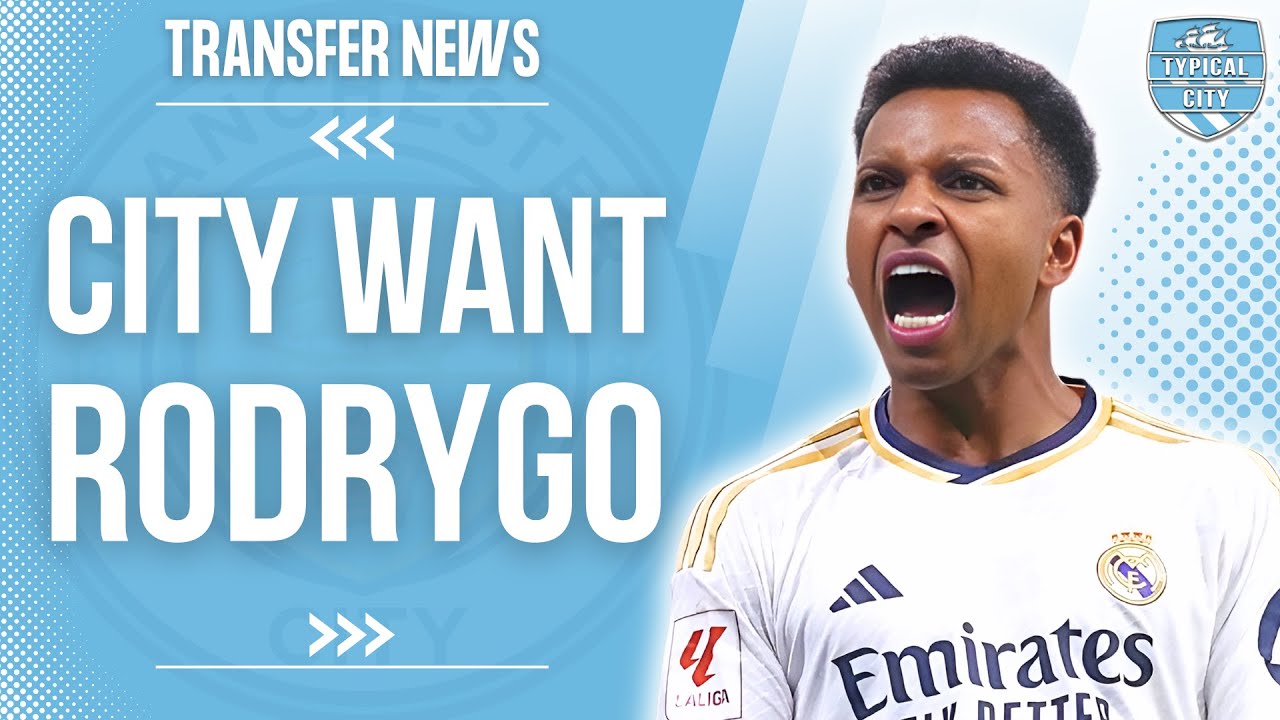
The conclusion of the 2024/25 season left both Real Madrid and Manchester City nursing wounds that cut deeper than typical campaign disappointments. For clubs accustomed to collecting silverware with the regularity of changing seasons, the failures experienced by these European powerhouses have created a sense of urgency that is driving unprecedented activity in the summer transfer market.
Real Madrid’s inability to retain their LaLiga and Champions League crowns represented more than just a temporary setback – it signaled a potential shift in the balance of power that Los Blancos have dominated for much of the past decade. The additional sting of losing the Copa del Rey final to their eternal rivals Barcelona added insult to injury, creating a perfect storm of disappointment that has galvanized the club’s hierarchy into action.
Meanwhile, Manchester City’s struggles were perhaps even more shocking given their recent dominance under Pep Guardiola. The fact that the Cityzens required a final-day victory merely to secure a top-five Premier League finish represents a dramatic fall from grace for a team that had grown accustomed to title races being formalities rather than genuine contests. The FA Cup final defeat to Crystal Palace served as the exclamation point on a season that will be remembered as one of the most disappointing in the club’s recent history.
These parallel disappointments have created a fascinating dynamic in the transfer market, where both clubs are simultaneously seeking to rebuild and strengthen, potentially at each other’s expense. The stakes have never been higher, and the summer of 2025 could prove to be a defining period for both institutions.
The Rebuilding Phase: Strategic Acquisitions and Future Planning
Both clubs have approached their summer business with the systematic precision that characterizes elite-level football operations. Manchester City’s acquisitions of Tijjani Reijnders, Rayan Ait-Nouri, Rayan Cherki, Sverre Nypan, and Marcus Bettinelli represent a carefully calculated blend of immediate impact players and future prospects. Each signing addresses specific tactical needs while also considering the long-term sustainability of the squad.
Reijnders, in particular, brings the kind of technical sophistication and tactical intelligence that Guardiola values in midfield players. His ability to operate in multiple positions and adapt to different phases of play makes him an ideal addition to City’s system. Similarly, Ait-Nouri’s pace and attacking threat from wide areas provide the kind of dynamism that can unlock tight defensive setups.
Real Madrid’s summer business has been equally impressive, with the acquisitions of Dean Huijsen, Alvaro Carreras, and Trent Alexander-Arnold representing significant statements of intent. The capture of Alexander-Arnold from Liverpool, in particular, demonstrates Madrid’s continued ability to attract world-class talent and address specific tactical needs. The England international’s crossing ability and set-piece expertise provide exactly the kind of creative spark that could transform Madrid’s attacking play.
The anticipated arrival of Franco Mastantuono in August adds another dimension to Madrid’s planning, with the young Argentine representing the kind of long-term investment that has characterized the club’s most successful periods. At just 18 years old, Mastantuono embodies the potential for future greatness that Madrid’s scouts have identified as crucial for sustained success.
Xabi Alonso’s Vision and Tactical Philosophy
The appointment of Xabi Alonso as Real Madrid’s new manager has injected fresh tactical thinking into the club’s approach to squad building. Alonso’s experience as both a player at the highest level and a manager who has demonstrated tactical innovation at Bayer Leverkusen provides Madrid with a unique perspective on how to construct a championship-winning team.
Alonso’s desire to sign a new centre-back to partner with Huijsen reflects his understanding of modern football’s demands on defensive players. The pairing would need to combine physical presence with technical ability, capable of playing out from the back while also providing the kind of aerial dominance that can be crucial in decisive moments.
The manager’s interest in adding a midfielder to complement his existing options demonstrates his commitment to controlling the tempo and rhythm of matches. In Alonso’s tactical system, midfield players must possess exceptional technical skills, positional awareness, and the ability to make quick decisions under pressure. These requirements naturally lead to a focus on the world’s elite midfield talents.
The Rodri Obsession: Why Madrid’s Interest Makes Perfect Sense
According to reports from Mundo Deportivo, Real Madrid’s interest in Rodri represents more than just admiration for a quality player – it reflects a strategic understanding of what it takes to dominate European football. The Spanish international’s 2024 Ballon d’Or victory serves as official confirmation of what many observers had long suspected: he is currently the world’s finest midfielder.
Rodri’s playing style embodies everything that Alonso values in a midfielder. His ability to dictate the tempo of matches, break up opposition attacks, and initiate his team’s build-up play makes him the complete package. The fact that he finished second to Vinicius Junior in The Best FIFA Football Awards 2024 only reinforces his status as one of the world’s elite players.
The 29-year-old’s impact on Manchester City’s success cannot be overstated. His presence in midfield provides the foundation upon which Guardiola’s entire tactical system is built. His ability to position himself intelligently, win possession cleanly, and distribute the ball with precision makes him irreplaceable in City’s current setup.
For Real Madrid, acquiring Rodri would represent the kind of transformative signing that could single-handedly elevate the team’s performance level. His experience in high-pressure situations, combined with his technical excellence and tactical intelligence, would provide exactly the kind of stability and quality that Madrid’s midfield currently lacks.
The Financial Reality: €100 Million Price Tags and Value Assessments
The report’s suggestion that Madrid are unwilling to pay more than €100 million for any midfielder except Rodri reveals the club’s sophisticated approach to market evaluation. This stance reflects both financial prudence and a recognition that truly transformative players justify premium valuations.
The €100 million threshold represents a significant psychological barrier in the transfer market. Beyond this figure, clubs must be absolutely certain that a player will provide both immediate impact and long-term value. For most players, this level of investment represents a risk that prudent clubs are unwilling to take.
However, Rodri’s unique combination of current ability, leadership qualities, and proven track record in the world’s most demanding competitions justifies consideration at this price level. His Ballon d’Or victory provides tangible evidence of his world-class status, while his consistent performances for both club and country demonstrate his reliability under pressure.
The financial calculation becomes more complex when considering Rodri’s age and recent injury history. At 29, he is approaching the latter stages of his peak years, which traditionally makes players less attractive for massive investments. His knee injury that sidelined him for most of last season, combined with his injury at the 2025 FIFA Club World Cup, adds additional risk factors to any potential transfer.
Manchester City’s Defensive Stance and Negotiation Dynamics
Real Madrid’s acknowledgment that signing Rodri would be “very, very complicated” reflects a realistic understanding of Manchester City’s position. For City, Rodri represents far more than just a valuable player – he is the engine that drives their entire tactical system.
Guardiola’s reliance on Rodri has been evident throughout their time working together. The Spanish midfielder’s ability to adapt to different tactical situations and maintain his performance level across multiple competitions makes him irreplaceable in City’s current setup. Losing him would require not just finding a replacement, but potentially restructuring the entire team’s approach to match organization.
From a negotiating standpoint, Manchester City hold all the cards. Rodri’s contract situation, combined with his importance to the team, means that any interested club would need to make an offer so substantial that it becomes impossible to refuse. This creates a challenging dynamic for Real Madrid, who must balance their desire to acquire world-class talent with the financial realities of modern football.
The complexity is further amplified by the relationships between the clubs and the player’s own preferences. Rodri’s connection to Spanish football and his previous experiences with Real Madrid’s rivals add layers of intrigue to any potential negotiations.
Alternative Options: The Enzo Fernandez Contingency Plan
According to Fichajes, Real Madrid’s interest in Chelsea midfielder Enzo Fernandez represents a more pragmatic approach to squad strengthening. The Argentine international offers many of the qualities that Madrid seek in a midfielder, potentially at a more achievable price point and with fewer complications than the Rodri pursuit.
Fernandez’s technical ability and passing range have been evident since his breakthrough performances at the 2022 World Cup. His ability to control the tempo of matches and create chances for teammates makes him an attractive option for clubs seeking to improve their midfield creativity.
The 24-year-old’s age profile makes him particularly appealing as a long-term investment. Unlike Rodri, who is approaching his 30s, Fernandez could provide Madrid with several years of peak performance while also offering potential for further development under Alonso’s guidance.
Chelsea’s financial situation and squad management challenges could make Fernandez more available than other comparable players. The London club’s need to balance their books and reduce their squad size creates opportunities for clubs like Real Madrid to acquire quality players at reasonable prices.
The Broader Context: Liverpool’s Konate and Defensive Priorities
Real Madrid’s continued interest in Liverpool defender Ibrahima Konate demonstrates the club’s comprehensive approach to squad improvement. The French international’s combination of pace, aerial ability, and defensive intelligence makes him an ideal candidate to partner with Dean Huijsen in Madrid’s defense.
Konate’s experience in high-pressure matches, including Champions League finals and international tournaments, provides the kind of proven quality that Madrid require. His ability to defend against different types of attackers and adapt to various tactical situations would add significant value to Madrid’s defensive options.
The pursuit of Konate also reflects Alonso’s tactical preferences and his understanding of modern defensive requirements. The former midfielder’s playing experience gives him unique insight into what defenders need to succeed against elite-level attacking players.
Injury Concerns and Risk Management
The injury concerns surrounding both Rodri and the broader transfer strategy represent a crucial factor in Madrid’s decision-making process. Rodri’s knee injury and subsequent fitness issues at the FIFA Club World Cup highlight the risks associated with major investments in players who have experienced significant physical setbacks.
Modern football’s intensity and schedule demands place enormous strain on players’ bodies, particularly midfielders who are expected to cover significant ground and engage in physical battles throughout matches. The rehabilitation process from serious injuries can be unpredictable, and even successful recoveries sometimes leave players more susceptible to future problems.
For Real Madrid, investing heavily in a player with recent injury concerns requires careful medical evaluation and risk assessment. The club’s medical staff would need to thoroughly evaluate Rodri’s current condition and long-term prognosis before committing to such a significant investment.
The Competitive Landscape and Market Dynamics
The summer of 2025 has seen unprecedented activity in the midfielder market, with several elite clubs seeking to strengthen their options in this crucial area. This increased competition has driven up prices and made negotiations more complex as clubs compete for a limited pool of truly world-class talent.
Manchester City’s own transfer activity, including their significant investments in midfield options, suggests that they are planning for various scenarios. Their acquisition of multiple players could indicate either preparation for Rodri’s potential departure or simply squad depth enhancement for a challenging season ahead.
The broader European football landscape has created a seller’s market for quality midfielders, with clubs recognizing the importance of controlling the middle of the pitch in modern tactical systems. This dynamic benefits players and their current clubs while creating challenges for potential buyers.
Long-term Strategic Implications
Real Madrid’s pursuit of Rodri represents more than just an attempt to improve their immediate prospects – it reflects a broader strategic vision for returning to the summit of European football. The Spanish club’s history of making statement signings that transform their competitive position makes this potential move consistent with their traditional approach to squad building.
The success or failure of this pursuit could have lasting implications for both clubs’ competitive positions. For Real Madrid, securing Rodri could provide the foundation for a new era of dominance, while failure to strengthen adequately could leave them vulnerable to continued struggles against their elite competitors.
For Manchester City, retaining Rodri represents not just keeping a key player, but maintaining the tactical foundation upon which their recent success has been built. The challenge lies in balancing the player’s potential desires for a new challenge against the club’s need to maintain their competitive edge.
Conclusion: A Transfer Saga with Championship Implications
The potential transfer of Rodri from Manchester City to Real Madrid represents one of the summer’s most significant storylines, with implications that extend far beyond the immediate clubs involved. The successful completion of such a move could fundamentally alter the competitive balance in European football while providing a fascinating case study in modern transfer market dynamics.
Regardless of the outcome, both clubs’ summer activities demonstrate their commitment to returning to the pinnacle of world football. The strategic thinking behind their transfer policies, the financial resources being deployed, and the tactical considerations driving their decisions all reflect the highest levels of professional football management.
As the transfer window progresses, the Rodri saga will continue to captivate observers while serving as a barometer for the ambitions and capabilities of two of football’s most prestigious institutions. The resolution of this pursuit, whether successful or not, will provide insights into the evolving dynamics of elite-level football and the lengths to which clubs will go to secure competitive advantages.
The stakes could not be higher, and the summer of 2025 may well be remembered as a pivotal moment in the recent history of both Real Madrid and Manchester City.


